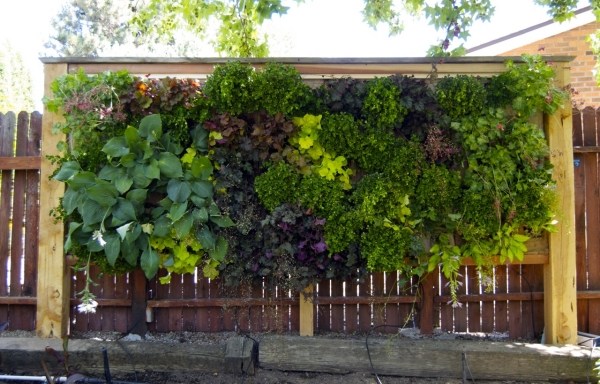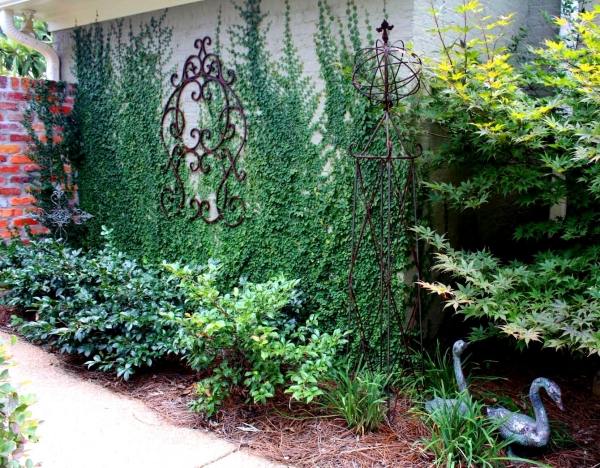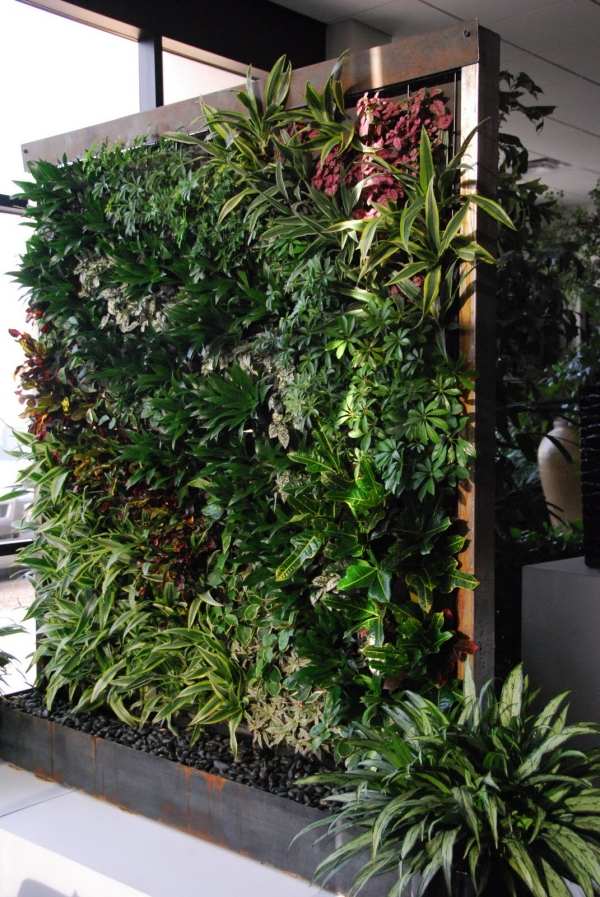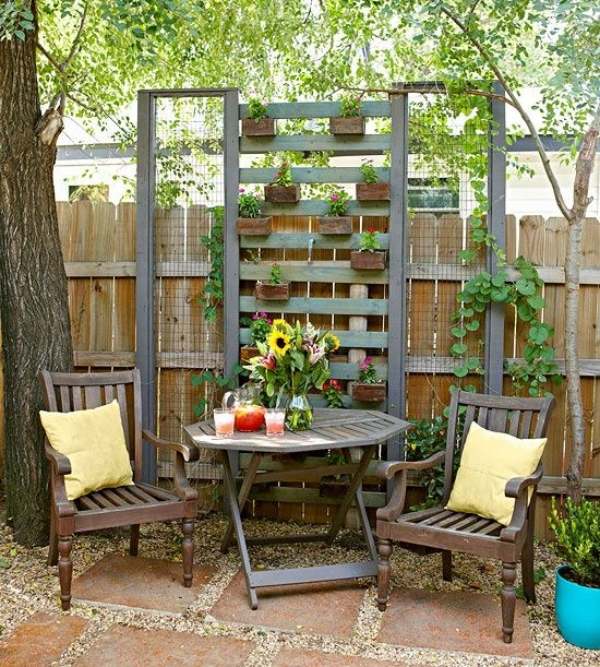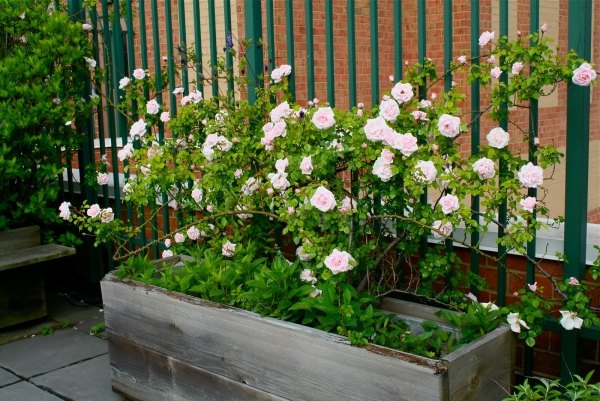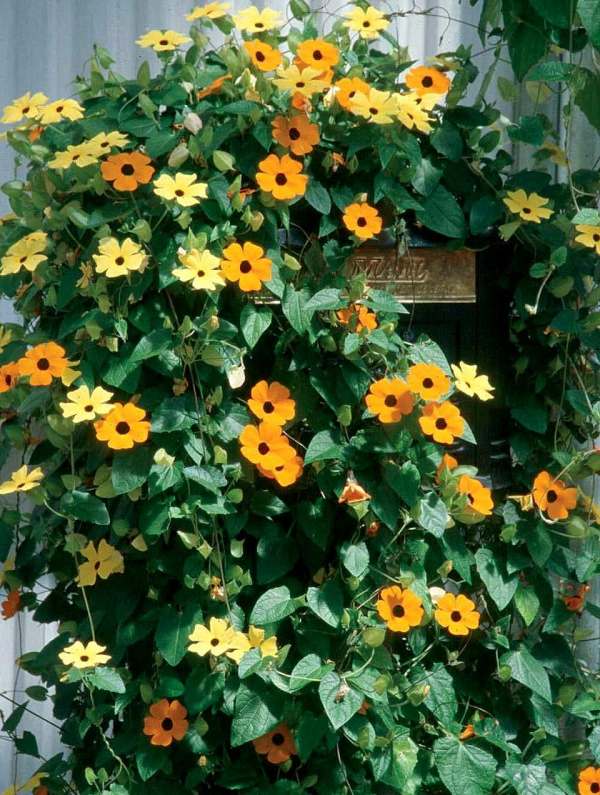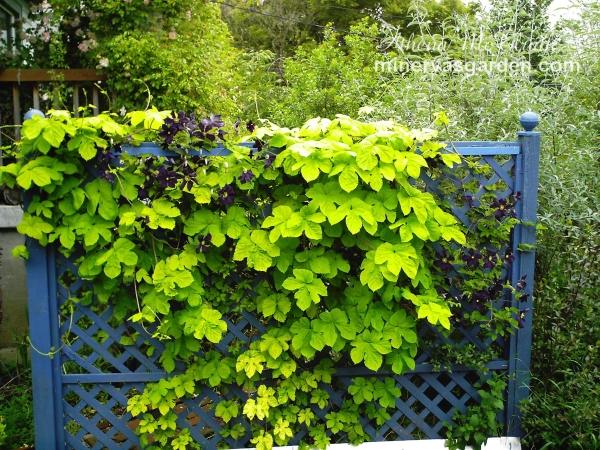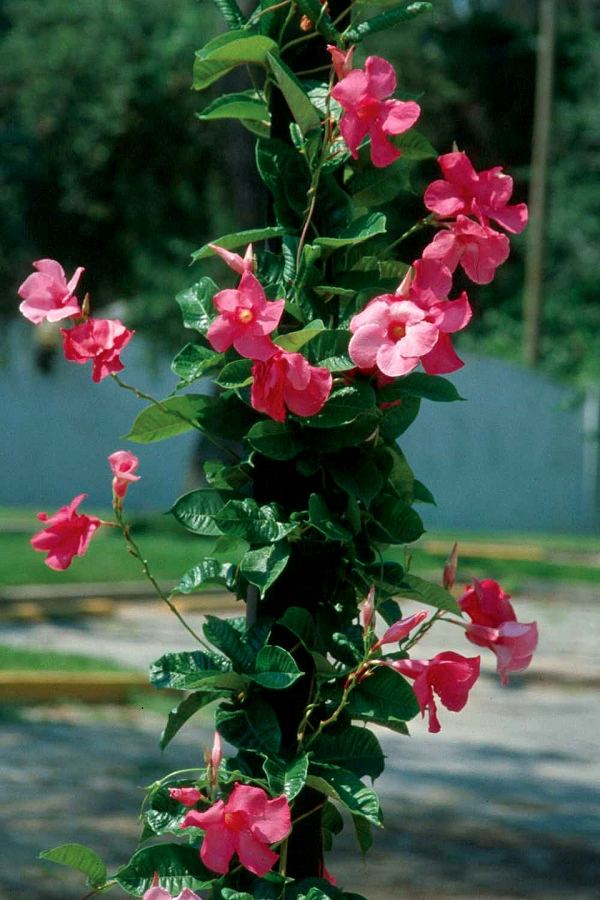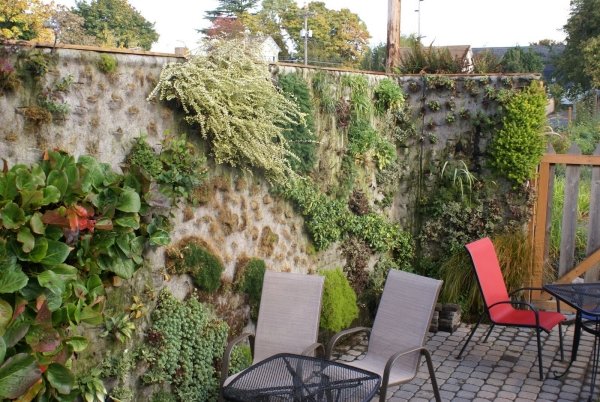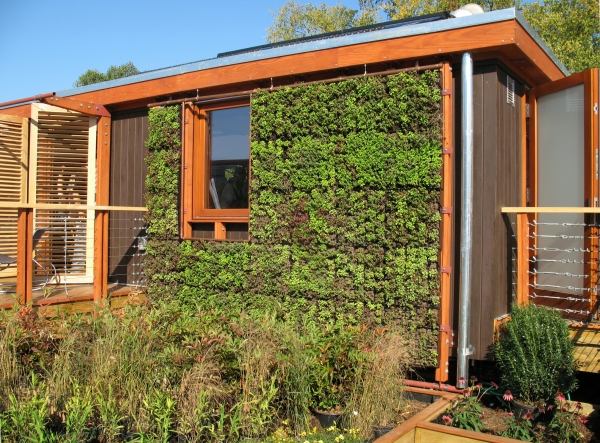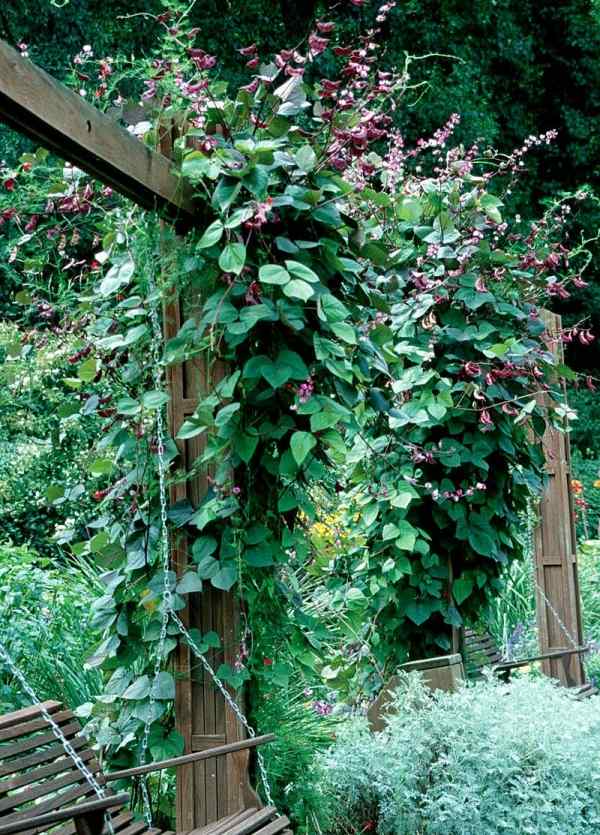Vertical gardens are one of the latest trends and yet it is one of the oldest. Maybe you have grown a vine or ivy on a fence or trellis? It is the perfect solution for almost any garden – inside or outside and with minimum space requirements.
Vertical gardens as a screen
The vertical greening can draw attention to a particular area or conceal an unattractive or undesirable views. Climbing plants or columnar trees transform the indoor environment and serve as a visual barrier. Using the grid, which is fixed to the floor or large plant containers vines, flowers and vegetables can be planted. Vertical garden designs require much less space than the conventional garden planning.
Vertical gardens – Dress up a concrete wall with ivy
Evergreen plants on vertical walls can be a boon for city dwellers who do not have much space. Of course they are also suitable for gardeners with large, traditional gardens. You can grow indoor plants as living walls by creating a tapestry with beautiful color and texture. They decorate the living room with fresh green while they filter the air pollutants. In cold climate in winter, houseplants add a much needed moisture in the interior, when the furnace dries out the air. Vertical garden layouts are becoming more popular in hotels and office buildings as living walls. Although the vertical garden design may need frequent watering, it provides good air circulation.
Wall greening or green walls.
Green or living walls are the latest trend in the vertical garden design. Some are simply walls covered with climbing plants, while others represent a modular system that can grow within the structures. The French botanist Patrick Blanc is considered the father of the vertical garden idea. He designed his first project on the facade of the Museum of Science and Industry in Paris in 1988. Dozens of his other works are now installed in indoor and outdoor areas of the world. Blanc describes his project as a living painting or plant walls.
To create a wall of plants with Patrick Blanc’s methods, you need a metal frame, a sheet of hard plastic and felt. The frame can be hung on the wall or can be used alone. The rigid plastic material is fixed to the frame which makes it water proof. The plant roots grow into the felt, where water and fertilizer are evenly distributed. The choice of location depends on the amount of light and other growing conditions. In addition to watering and fertilizing the green walls require other maintenance, including pruning, dusting, weeding, and replacing the wilted plants. Vertical garden designs are heavy, so please discuss with an expert to make sure that your wall can hold the load.
– Anchor your structure in place before planting. This allows you to not to disturb the roots or stems of the plants afterwards. Use stable structures for heavy or demanding plants.
– High plants and structures cast shadows that can affect the growing plants in the vicinity.
– Plants grow differently. Some, such as climbing roses, need to be physically attached to structures, while others, such as bindweed, are self winding around the lattice.
– Plants that are grown vertically need frequent watering and fertilization, because they are exposed to more light and wind.
– Annual flowering vines that are not too heavy – Black-eyed Susan (Thunbergia alata), Ipomoea, Ipomoea quamoclit, Moonflower (Ipomoea alba), scarlet runner bean (Phaseolus coccineus) and Hyacinth Bean (Dolichos lablab). All grow best in full sun.
The easy growing perennials are vine, clematis hybrids, American bittersweet (Celastrus scandens) and ivy include (Hedera). All grow best in full sun. The Clematis prefer their flowers in the sun and roots in the shade.
– Climbers for shade – Kiwi vines (Actinidia kolomikta) Chocolate vine (Akebia quinata), Dutchman’s pipe (Aristolochia macrophylla) and climbing hydrangea (Hydrangea petiolaris).
Other plants, which are also ideal for vertical gardening, are small-fruited varieties such as kiwi (Actinidia deliciosa), gooseberry (Actinidia arguta), edible flowers like nasturtiums and vegetables such as peas, squash, tomatoes and pole beans.
– Columnar plants create a vertical focal point. Many can be grown without a support structure – columnar apple trees, arborvitae (Thuja occidentalis), juniper (Juniperus scopulorum) or black poplar (Populus nigra).
Technical Requirements:
Fences, axes, grids, steel pipe scaffolding and other types of structures make it easy to grow plants vertically. Hanging baskets can be used as elements of vertical garden designs, because they break the horizontal plane of gardening. If you have an existing structure such as a gazebo or a garage, add a grid in front of one of the walls, so that the plants have a supporting structure, and cause no damage to the wall. Be sure to leave some space between the grid and the wall for air circulation.


